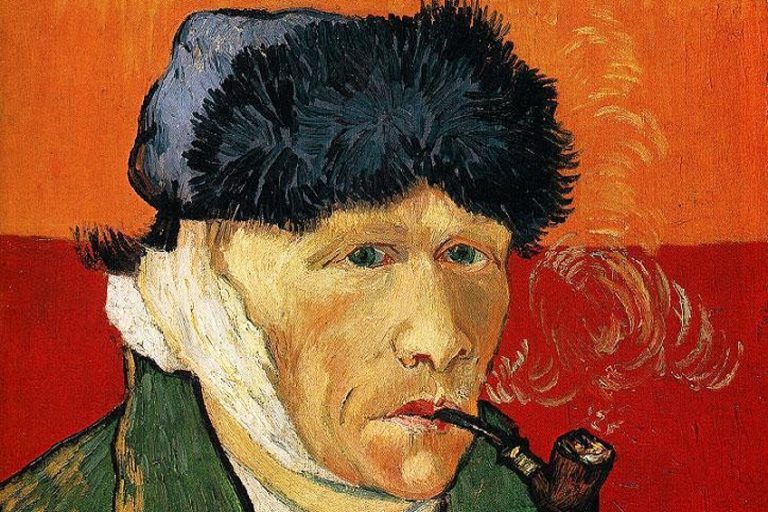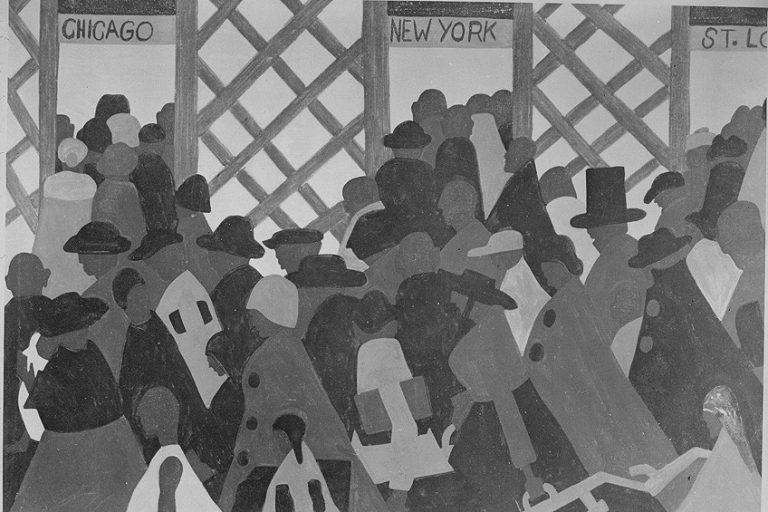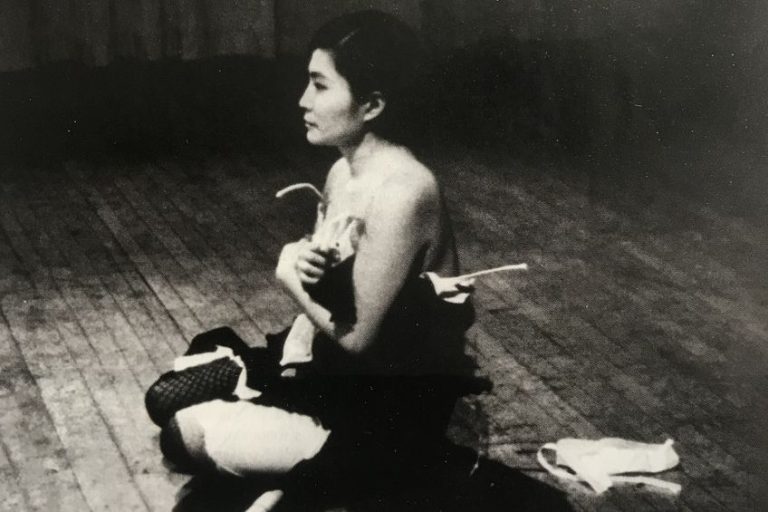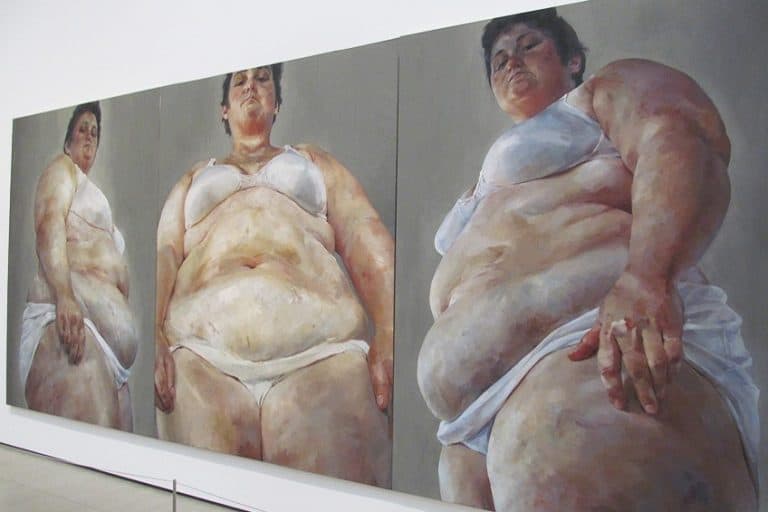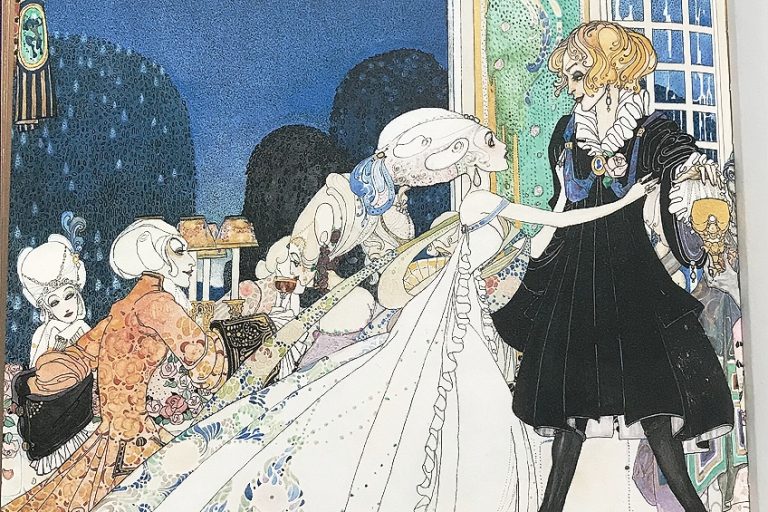Famous Dadaism Artists – The Beginning of Conceptual Art
Ever wondered when conceptual art truly began, and what the inspiration was behind the use of ready-made art? Look no further! In this article, we will explore the rejection of bourgeois culture that began in Zürich through Dadaism. We will also uncover the origins of Dadaism, as well as 15 of the most famous Dadaism artists that you need to know. Keep reading to learn more about these famous Dada movement pioneers!
An Introduction to Dadaism
The 20th century brought many avant-garde movements to the fine art world that were inspired by a rejection of former and often more constructed societal codes of acceptance, visual languages, and rigid methods that attempted to define art. In Zürich, Switzerland, a movement called Dadaism emerged as a response to the perceived spark of World War I, nationalism, which saw a selection of artists pioneer a broader spectrum of artistic devices. From ready-made to poetic performances and criticism of the bourgeois cultures that influenced the war, Dadaists introduced a satirical approach to modern art.
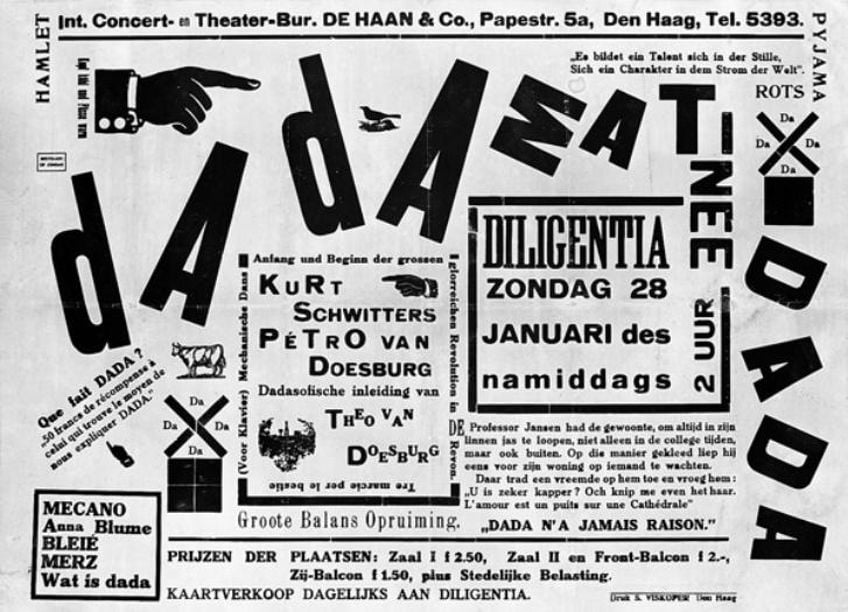
So, what was Dadaism? Dadaism was born out of multiple influences from modern movements such as Fauvism and Expressionism that embraced a broader view of the world and new visual languages. One of the defining aspects of the movement was its multimedia approach to relaying these narratives about the materialism of society and the false sense of nationalism that was riddled with personal agendas. Dadaism infiltrated other countries in Europe with significant influence over cities like Cologne and Paris, each establishing their distinct Dadaist groups. As such, Dadaism is also understood as the direct antecedent of the 1960s movement of Conceptual art that removed the need for aesthetically pleasing artworks.
Part of the narrative of Dadaism was the use of mockery as an artistic device to critique the sensibilities of the time and unpack the more challenging questions about the artist and what roles had now fallen onto the artist as an active participant in society and yet a mirror to it.
Members of Dadaism were focused on rejecting the norms set by the bourgeoisie, to such an extent that some even claimed that Dada itself was anti-Dada. The pioneering group was established in the Cabaret Voltaire, which was named after the French Enlightenment writer M. de Voltaire, or François-Marie Arouet. Voltaire was most famous for his use of satire, which featured in his widely banned book Candide (1759). The book itself was recognized for its religious blasphemy and political sedition, which ultimately denounced metaphysical optimism.
Chance and Ready-Mades in Dadaism
One of the founders of Dada, a German writer and sound poet named Hugo Ball also claimed that Dadaism was then the Candide of his era. Notions such as chance propelled by figures like Hans Arp also introduced the rejection of how art ought to be produced, without structure or planning and “up to chance” rather than meticulously executed. This was one way that Dadaism artists challenged the norms of the day while critiquing the role of the creator in artistic processes.
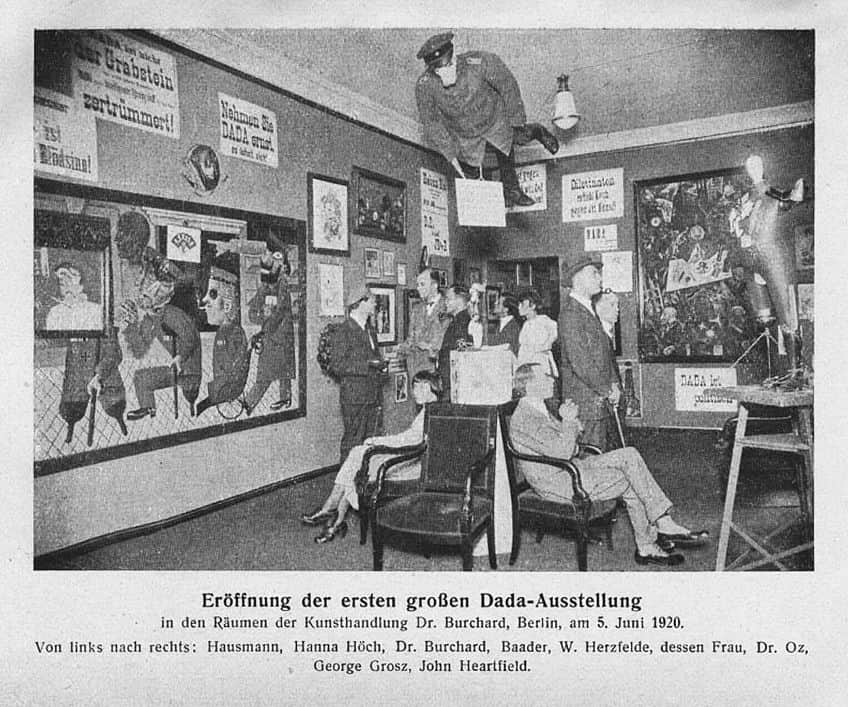
Most Dada movement pioneers were best known for their use of readymade objects in art and as art. These “readymades” were composed of curated objects that were arranged and designed by the artist without much alteration to the originality and authenticity of an everyday object. This radical acceptance of the everyday object as an artwork and the refusal of the artist to enact a rigorous process of change on the object was a revolutionary move on the part of Dadaism. One may also recall Marcel Duchamp’s readymade urinal, which became a popular Dadaist example of the readymade in art and a signifier of the eradication of traditional artistic skills. This was done to emphasize the importance of intellectual and conceptual prowess over technical abilities.
15 Famous Dadaism Artists to Know
In contesting traditional norms about making art, Dadaism teaches us to ask questions such as “What constitutes art, and who decides what art is?”, which are just as relevant to Contemporary modes of thinking. The subversion of established norms is a potent critique of consumer culture, societal values, and the notion of the art establishment that all artists need to examine closer.
Below, we will review the top 15 most famous Dada movement pioneers, whose unique criticisms of society have laid the foundations for many postmodern art movements.
Elsa von Freytag-Loringhoven (1874 – 1927)
| Artist Name | Elsa Baroness von Freytag-Loringhoven (born Else Hildegard Plötz) |
| Date of Birth | 12 July 1874 |
| Date of Death | 14 December 1927 |
| Nationality | German |
| Associated Movements, Themes, and Styles | Dada, Modern art, and readymade art |
| Mediums | Sculpture, poetry, performance, and fashion |
| Famous Artworks |
|
You may have heard of Marcel Duchamp’s name all too often when discussing Dada art and the notion of the readymade, but many have not encountered the renowned poet and performance artist Elsa von Freytag-Loringhoven. Elsa von Freytag-Loringhoven was a famous figure who was known as the Baroness of Dadaism and pioneered some of the most creative and raw forms of femme expression in the Dada movement.
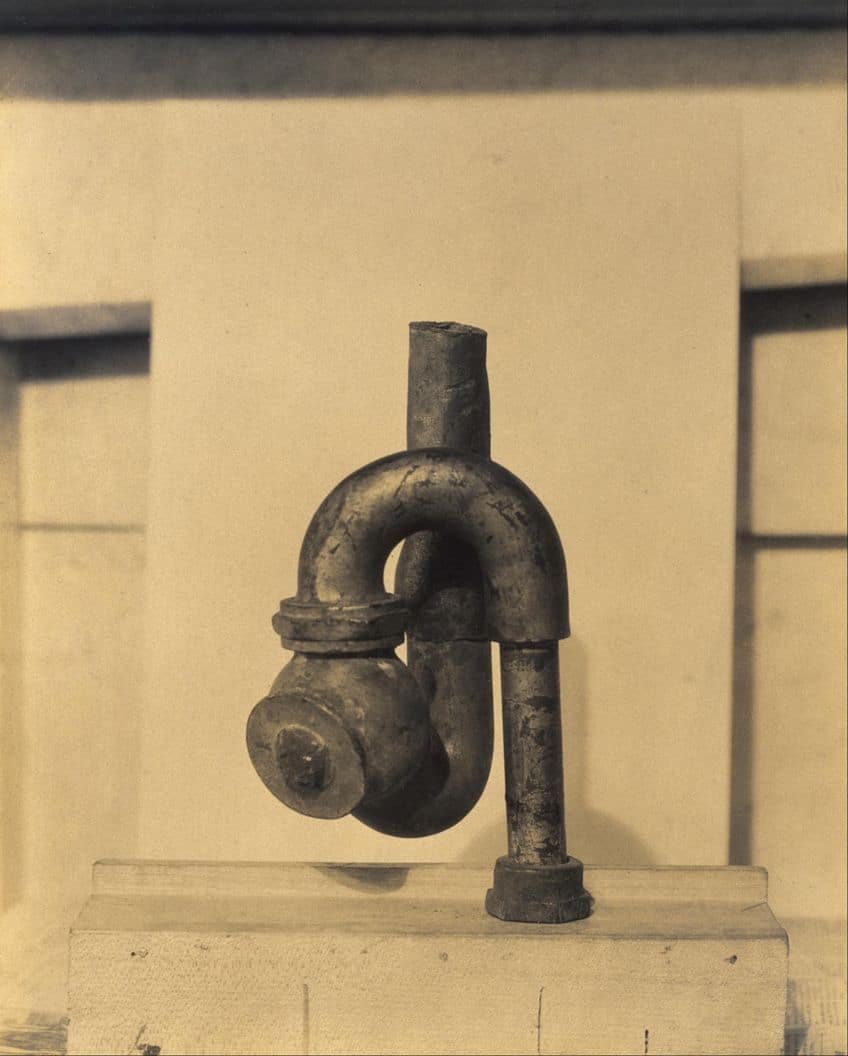
The Baroness successfully championed the use of the readymade alongside Duchamp through her fusion of fashion, poetry, and performance to provide a new perspective on the adaptation of everyday objects into art to defy societal norms. Through her public appearances, the Baroness introduced cross-dressing into her routine to challenge onlookers’ perceptions of gender and reality. While her own identity around a preferred gender remains unknown, the Baroness was well-known in the Dadaist circle for her radical nature, which was often dismissed on the assumption that she was simply “eccentric”. What made her work particularly impactful was her disruption of what the public expected her to be and how she was expected to perform as a female artist.
Her use of everyday objects also resonated with the Dadaist critique of the commercialization of art items and thus had a greater impact on the public in terms of rhythm than that of Duchamp’s statement objects.
Francis Picabia (1879 – 1953)
| Artist Name | Francis Picabia |
| Date of Birth | 22 January 1879 |
| Date of Death | 30 November 1953 |
| Nationality | French |
| Associated Movements, Themes, and Styles | Dada, Surrealism, Modern art, Section d’Or, and Cubism |
| Mediums | Writer, painter, filmmaking, typography, and poetry |
| Famous Artworks |
|
Francis Picabia, who was also better known as “Papa Dada” was a founding father of Dadaism in Paris, who played a significant role in defying and critiquing the societal conventions of the time. Picabia refused the technical concerns of art and championed his paintings and poems with biting satire that directly addressed and mocked the existing moral, religious, and legal codes of the day.
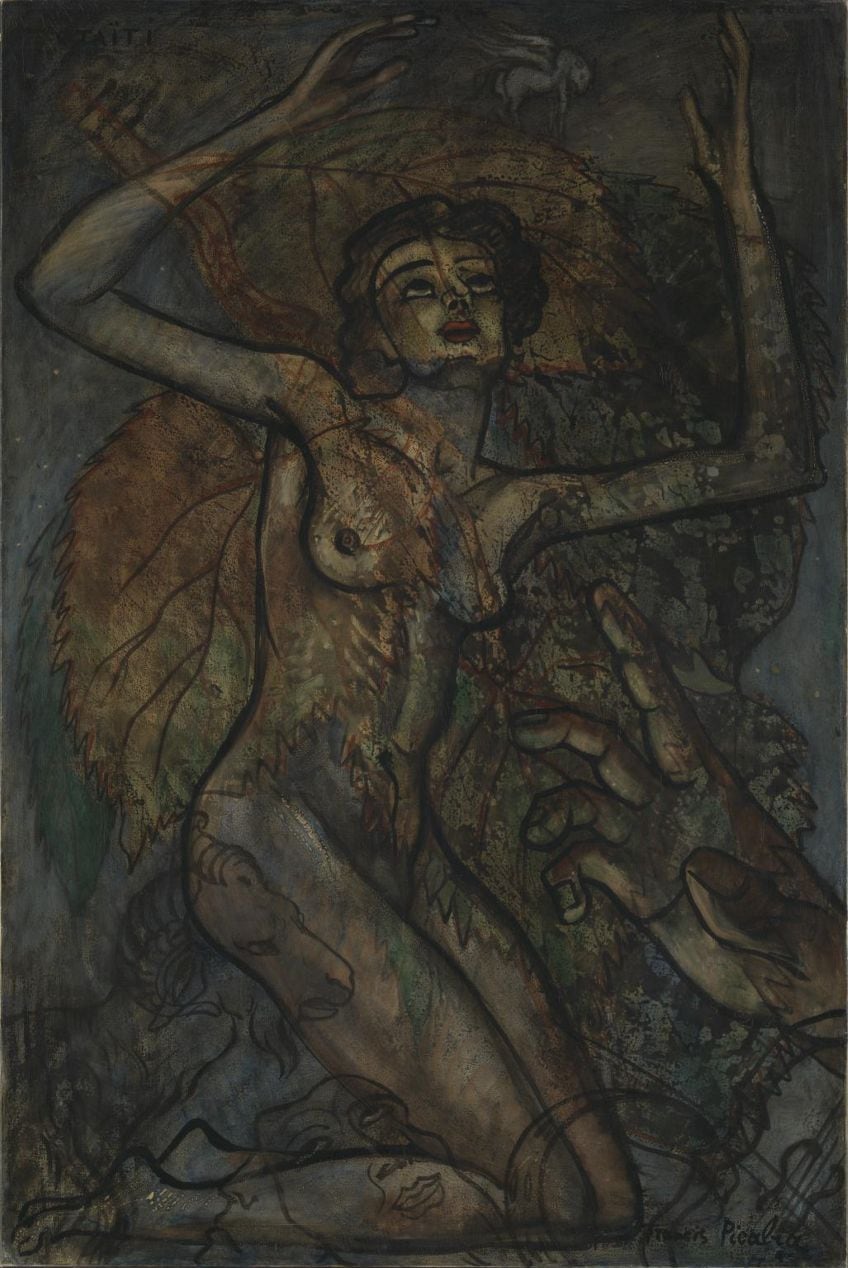
In Dadaism, European culture was seen as the greatest contributor to the devastation of World War I which angered many artists, including Picabia, who embraced the spirit of Dada in New York and Paris while collaborating with other Dadaists like Marcel Duchamp. Picabia’s art ranged from stylized erotic illustrations of machinery to text artworks and paintings that evoked the bizarre and early notions of conceptual art. Picabia’s work remained iconic even when other avant-garde movements such as Surrealism overtook Dada.
Picabia maintained his satirical outlook and shifted between abstraction and figuration during a time when many artists chose to stick to one style.
Hugo Ball (1886 – 1927)
| Artist Name | Hugo Ball |
| Date of Birth | 22 February 1886 |
| Date of Death | 14 September 1927 |
| Nationality | German |
| Associated Movements, Themes, and Styles | Dada and Modern literature |
| Mediums | Poetry and performance |
| Famous Artworks |
|
A central figure of the Dada movement at the Cabaret Voltaire was Hugo Ball, who alongside figures like Emmy Hennings, established the movement of Dada during the First World War. Ball penned the first Dada manifesto in 1916 along with a staged poetry performance called Karawane, which saw Ball’s rebellion against the values of the bourgeoisie and the widespread glorification of war.
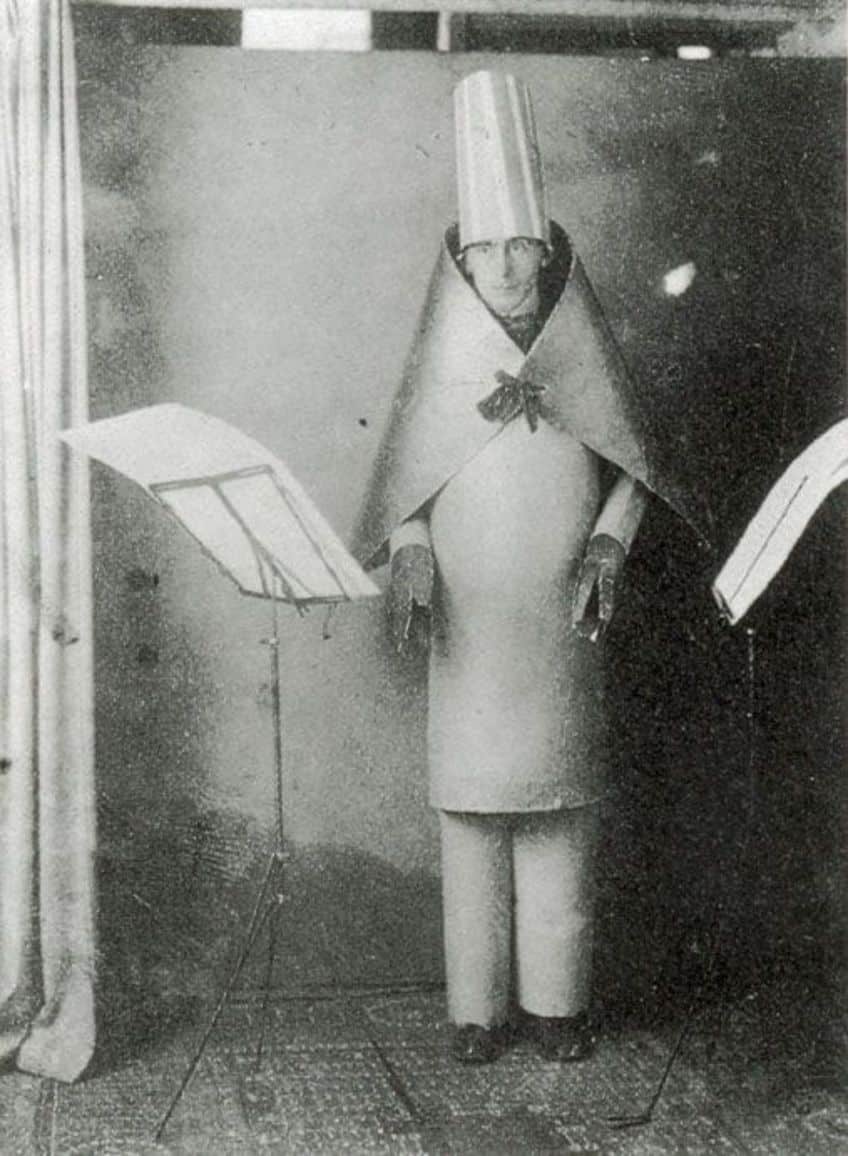
Ball was also recognized for his innovative sound poems, which fused the idea of the nonsensical with blunt seriousness and irony as a critique of Western culture. Ball was also the author behind many experimental works in German literature and kept an extensive diary despite the declining momentum of the original collective. His influence climbed and he eventually retreated away in the 1920s to explore Catholicism and mysticism as tools to reflect on his complex encounters. His passion was born from his will to question beliefs that were deeply rooted in society and which needed to be interrogated through a lens of humor and seriousness.
The word “Dada” itself was explained by Ball as translating to “hobby horse” or “be seeing you some time” which was aimed at disrupting the public’s beliefs about the world amid the chaos of war.
Hans Arp (1886 – 1966)
| Artist Name | Hans Peter Wilhelm Arp |
| Date of Birth | 16 September 1886 |
| Date of Death | 7 June 1966 |
| Nationality | German-French |
| Associated Movements, Themes, and Styles | Dada, Surrealism, Modern art, and Abstract art |
| Mediums | Painting, sculpture, and poetry |
| Famous Artworks |
|
Hans Arp was one of the most famous Dadaism artists of all time, who was known to be an innovative polymath. Arp created many impactful works in his day, including biomorphic sculptures from all sorts of materials. His sculptures also complemented his paintings, poetry, and collages, which established a coherent and diverse oeuvre for the artist.
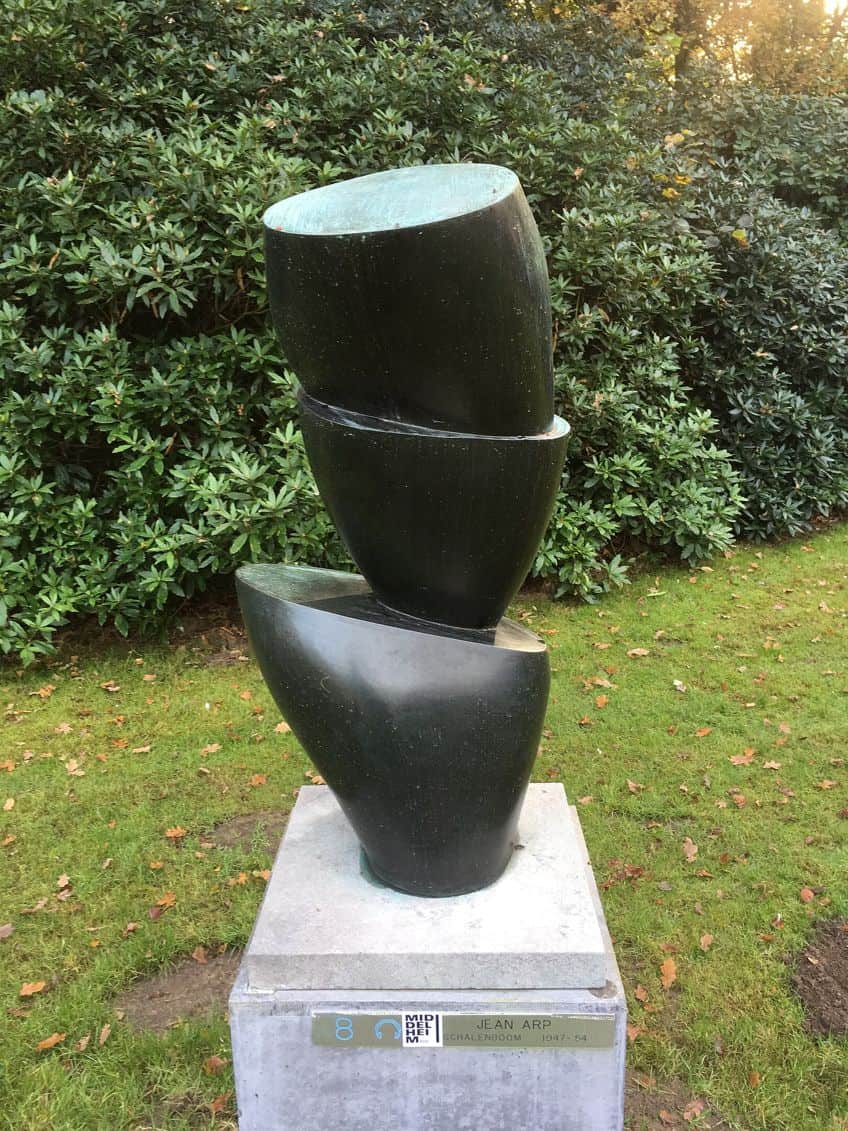
Arp’s approach to Dadaism was shaped by the concept of organic abstraction, which was characterized by the use of wavy and linear elements in his work that were conceived of as entirely abstract. An advocate of non-representation, Arp’s portfolio traversed themes such as metamorphosis and growth while using elements of chance, nature, and a reduced sense of conscious intervention to shape his art. The integration of randomness, which was at the forefront of Dadaism, was championed by Arp as he created forms before he put a label on them.
In his way, Arp was led by his subconscious mind, thus provoking the proto-Surrealist concepts of relationships that emerge from the fusion of the conscious and subconscious mind.
Raoul Hausmann (1886 – 1971)
| Artist Name | Raoul Hausmann |
| Date of Birth | 12 July 1886 |
| Date of Death | 1 February 1971 |
| Nationality | Austrian |
| Associated Movements, Themes, and Styles | Dada and Modern art |
| Mediums | Poetry, performance, sculpture, collage, and writing |
| Famous Artworks |
|
One of the champions of Berlin Dada and anti-establishment advocate Raoul Hausmann, was a significant force in the Dada avant-garde movement. Hausmann, along with Hannah Höch, spearheaded the use of photomontage in anti-art practices to shed insight into the large societal shifts that occurred in post-war Germany. Hausmann also excelled in constructing assemblages and creating sound poetry, which were considered avant-garde at the time.

Furthermore, his interest in sound and exploring its interactions with imagery also led to the creation of a phonetic poem, which involved the construction of a poem without traditional sentences or words. The phonetic poem relied on punctuation marks and typed letters to create visual impressions and thus be recited or performed rhythmically. Hausmann was also occupied with the idea of establishing the “new European man”, constructed once more from the trenches of the First World War and as a spirit of the post-revolutionary Soviet world.
In his view, his anti-art approach was a tool to dismantle what he thought to be the dehumanizing weapons of militarism and materialism.
Kurt Schwitters (1887 – 1948)
| Artist Name | Kurt Hermann Eduard Karl Julius Schwitters |
| Date of Birth | 20 June 1887 |
| Date of Death | 8 January 1948 |
| Nationality | German |
| Associated Movements, Themes, and Styles | Dada, Surrealism, Modern art, Constructivism, Abstract art, and Merz |
| Mediums | Painting, sculpture, installation, poetry, graphic design, and typography |
| Famous Artworks |
|
Kurt Schwitters was a renowned German Dadaist whose first Dada works emerged from the post-war landscape with his unconventional approach to integrating discarded materials into his sculptures and installations. One might recognize his work, now long destroyed, from his famous 1937 Merzbau installation, which mimicked the appearance of a three-dimensional collage.

The site-specific work was destroyed, however, more creations of a similar nature appeared after as an organic response to critical questions of Dada that applied to the artist and the work. Schwitters not only created sculptures and paintings but also used his poetry as a beacon for provoking thoughts around the translation of physical objects into linguistic devices as experimental compositions. His use of musical compositions also expanded the integrity of his search for meaning-making through the integration of letters into unusual combinations. He also disrupted traditional layout formats in print media to draw attention to the relationships between text and images.
Kurt Schwitters’ Dada works demanded attention from his viewers in such an experimental way that it was hard to forget and as such, challenged viewers to critique the fabric of societal norms and establishments.
Marcel Duchamp (1887 – 1968)
| Artist Name | Henri-Robert-Marcel Duchamp |
| Date of Birth | 28 July 1887 |
| Date of Death | 2 October 1968 |
| Nationality | French |
| Associated Movements, Themes, and Styles | Dada, Modern art, Surrealism, Cubism, Section d’Or, and Conceptual art |
| Mediums | Painting, sculpture, assemblage, and writing |
| Famous Artworks |
|
Marcel Duchamp was one of the most famous Dadaist artists of the 20th century whose transformative influence remains a force to be reckoned with well into the 21st century. Duchamp was credited with pioneering the essence of readymade sculptures in art, which sent shockwaves throughout the European art world.

His work explored the relationships of objects through sculpture, assemblage, and painting while interrogating his fascination with wordplay, sexuality, and desire. While not tied down to any formal art movement, Duchamp strongly identified with the proto-Dada styles, which he championed as early as 1913 with his Bicycle Wheel sculpture. Today, he is widely recognized as one of the most important artists of Conceptual art who was largely inspired by his fear of repetition. His use of readymade objects was also viewed as a new approach to exploring motion, perspective, and machines that defined modernity as more than just objects and artworks of visual pleasure.
Duchamp’s works were also embedded with innuendo, humor, and linguistic creativity, which led to his ultimate fame.
Hans Richter (1888 – 1976)
| Artist Name | Hans Richter |
| Date of Birth | 6 April 1888 |
| Date of Death | 1 February 1976 |
| Nationality | German |
| Associated Movements, Themes, and Styles | Dada, Modern Art, and Art History |
| Mediums | Painting, filmmaking, and graphic art |
| Famous Artworks |
|
Hans Richter was a revolutionary Modern artist and film producer whose background traverses the trenches of war and the intellectual circles of Modern art movements, including Dada, Surrealism, and Fluxus. Hans Richter’s influence extended into cinema, which stretched his artistic innovations to the point where he started to create abstract films that went on to inspire many American directors.
Richter’s inspiration was led by his pursuit of outlining the human experience and using it to draw attention to prominent themes such as war, political censorship, persecution, and the rhythmic nature of music. Through organic form and plays with contrast, Richter infused life in his paintings similar to how a composer would conceive of music. He often collaborated with various composers of the time to present a unique fusion of sound and image while transforming the experience of cinema.
In both representational and abstract dynamics, Richter also embraced radical political ideas and used mediums like film, collage, and music to dismantle the 19th-century conceptions of static painting.
Sophie Taeuber-Arp (1889 – 1943)
| Artist Name | Sophie Henriette Gertrud Taeuber-Arp |
| Date of Birth | 19 January 1889 |
| Date of Death | 13 January 1943 |
| Nationality | Swiss |
| Associated Movements, Themes, and Styles | Dada, Abstract art, Modern art, Constructivism, and concrete art |
| Mediums | Textile design, painting, sculpture, architecture, furniture design, interior design, and dancing |
| Famous Artworks |
|
Sophie Taeuber-Arp was a pioneering figure of the Dada movement who stood firmly against the categorization of her work. Taeuber-Arp was best known for her remarkable legacy and interdisciplinary approach to art that spanned the mediums of design, architecture, dance, painting, and sculpture. One of the most fascinating aspects of her work was the soft quietness of her use of geometry and color, which she drew from her knowledge of Constructivist artists.

Taeuber-Arp’s paintings and sculptures were led by her admiration for the intrinsic beauty of everyday life that was enhanced by geometry. Her passion for her textile works was also led by her interest in the rationality of lines, proportions, and patterns, which made for vibrant and avant-garde designs. Taeuber-Arp’s legacy began at the Cabaret Voltaire, where she took to the stage as a trained dancer, choreographer, and designer while contributing to Dadaist expressions of nonsensical performance.
Her experimentation with marionette design also produced whimsical sculptures called “Dada Heads”, which Taeuber-Arp used to establish abstract human faces using wood pieces that also stimulated conversations around the marriage of craft, decoration, and fine art.
Hannah Höch (1889 – 1978)
| Artist Name | Hannah Höch |
| Date of Birth | 1 November 1889 |
| Date of Death | 31 May 1978 |
| Nationality | German |
| Associated Movements, Themes, and Styles | Dada and Modern art |
| Mediums | Collage, photomontage, and painting |
| Famous Artworks |
|
Trailblazing Dadaist Hannah Höch was one of the greatest pioneers of Dadaism in the 20th century, who was the sole female artist to achieve recognition in the male-dominated Dada movement. Höch was a German collage artist and painter who was known for her strong advocacy for women in art and creative spaces in European society.

Her contribution to Dadaism was best captured in her photomontages that provoked questions about the societal norms assigned to women and men. Her techniques involved early modern forms of appropriation that explored a vast range of visual elements and transformed seemingly random images into profound compositions. Höch was also dedicated to expanding the definitions of art and drew from popular cultures to inform her creations and inspire a new generation of artistic expression.
In essence, Höch’s Dadaist art became a political statement that criticized the social structures of modernity and influenced the development of the ”new woman” in 20th-century society.
Man Ray (1890 – 1976)
| Artist Name | Man Ray |
| Date of Birth | 27 August 1890 |
| Date of Death | 18 November 1976 |
| Nationality | American |
| Associated Movements, Themes, and Styles | Dada, Surrealism, Modern art, Cubism, and Abstract art |
| Mediums | Photography and painting |
| Famous Artworks |
|
Man Ray was considered to be one of the best proto-Surrealist artists of the 20th century whose contributions to Dadaism were recognized in works such as The Enigma of Isidore Ducasse (1920) and his 1923 Object to Be Destroyed series. Man Ray was well-respected throughout American and European art circles and is seen as a pioneer of American Modernism.

Ray settled in Paris in the 1920s and spent the next two decades traveling between Hollywood and New York in the United States to expand his practice. Through sculpture, photography, and film, May Ray channeled his influences of Cubism, Dadaism, and Surrealism to create some of the most unforgettable images of the period, including his most famous photo Le Violon d’Ingres (1924).
The Dadaist luminary was also celebrated by figures like André Breton, who recognized his style before the movement was established.
Max Ernst (1891 – 1976)
| Artist Name | Max Ernst |
| Date of Birth | 2 April 1891 |
| Date of Death | 1 April 1976 |
| Nationality | German |
| Associated Movements, Themes, and Styles | Dada, Modern art, and Surrealism |
| Mediums | Sculpture, painting, printmaking, and graphic art |
| Famous Artworks |
|
Famous Dadaist Max Ernst was an innovative German multi-media artist whose many Dada paintings reflected his early interests in matters of the unconscious world. Ernst’s work was largely informed by his experience as a soldier in World War I, which greatly impacted his view of Western culture and fueled his passion for Dada.

Extending himself to Surrealism, Ernst’s work explores the turmoil of his life through primal emotions and personal trauma. Additionally, he explored notions of the universal unconscious through automatic painting to achieve a pre-verbal state of existence and understand the collective unconscious.
Max Ernst’s work has since influenced many Abstract Expressionists and Surrealists who are drawn to the inner worlds of those exposed to trauma and conflict.
George Grosz (1893 – 1959)
| Artist Name | George Grosz |
| Date of Birth | 26 July 1893 |
| Date of Death | 6 July 1959 |
| Nationality | German |
| Associated Movements, Themes, and Styles | Dada, Modern art, New Objectivity, and Expressionism |
| Mediums | Painting, drawing, and caricature illustration |
| Famous Artworks |
|
George Grosz was among the most renowned Dadaism artists of the Modern era whose work was used to depict the stark and grim realities of the moral decay of the world in World War I. Grosz studied in Europe and served in the war, which later informed his Dada works that reflected his view of the war, as well as his observations about the shortcomings of bureaucratic systems.

His unique art style was shaped by a fusion of Cubism, Futurism, and abstraction that created powerful and symbolic representations of political leaders and the resultant societal decay caused by nationalism, militarism, and capitalism. Grosz also used his collages and drawings to create photomontages that blended collages and photography to deliver powerful messages that often led to legal battles.
Following a forced flee to the United States during the rise of Hitler’s reign, Grosz leveraged his artistic explorations to expose social ills and voice his observations about the 20th-century political landscape at many global establishments.
Marcel Janco (1895 – 1984)
| Artist Name | Marcel Janco |
| Date of Birth | 24 May 1895 |
| Date of Death | 21 April 1984 |
| Nationality | Romanian-Israeli |
| Associated Movements, Themes, and Styles | Dada, Modern art, Cubism, Surrealism, Expressionism, Abstract art, and Futurism |
| Mediums | Art theory, architecture, and painting |
| Famous Artworks |
|
Marcel Janco was a famous Romanian-Israeli Dada artist who spent his youth in Zurich, where he discovered and embraced the Dada movement. Janco was known to collaborate with contemporaries like Tristan Tzara on unique works that would draw from the rich visuals of Expressionism and Cubism while shaping the genre of performance art.

The duo often worked at the Cabaret Voltaire in a series of performances that were often seen as spectacles. The performances involved the two transforming themselves into shamans using African masks to generate a reaction from the public. While many have thought the work to be revolutionary in the field of engaging the European audience, it still relied on the appropriation of African art to benefit the societal and cultural awakening of Europe. Janco transitioned to Constructivism to explore urban planning and architecture, which marked a turning point in the aesthetics of central Bucharest.
With the imminent anti-Semitic wave across Europe, Janco moved to the Palestinian Mandate, where he began piloting Modern Israeli art through the introduction of Constructivist visuals and collaborations with local artists.
Tristan Tzara (1896 – 1963)
| Artist Name | Tristan Tzara |
| Date of Birth | 16 April 1896 |
| Date of Death | 25 December 1963 |
| Nationality | Romanian |
| Associated Movements, Themes, and Styles | Dada, Modern art, and anti-establishment art |
| Mediums | Writing, painting, performance, printmaking, and poetry |
| Famous Artworks |
|
Famous Romanian poet and author of Dadaist literature Tristan Tzara was renowned as the radical founder of Dada during World War I in Zurich and was admired for his provocative approach to disrupting the status quo of artistic norms. Tristan Tzara’s contribution to Dada was defined by the publication of his manifestos that outlined the aims of Dadaism, which Tzara also widely distributed while engaging in a series of “outrageous” performances across local cafes. The Dadaist was passionate about expanding his ideas and continued to shock audiences across Paris by transforming literary conferences into hoaxes and playing tricks on the general public.
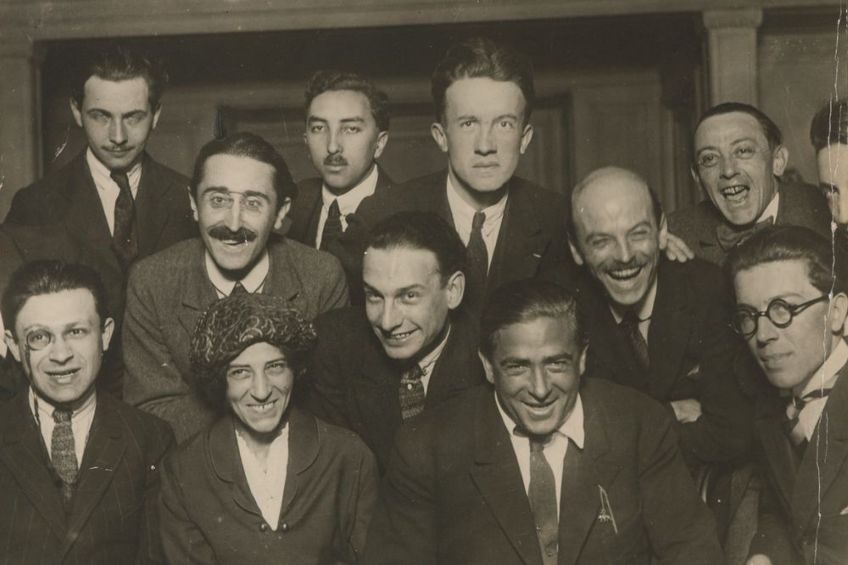
Tzara had also experimented with African art and poetry by using Primitivism, a controversial genre in itself, to add to the mystique of his performances. Additionally, one might also suspect Tzara of cultural appropriation as he also integrated African chants and dances into his performances to shock the European audience and provoke questions around the relationship between Primitivism, or how it was conceived, and the subconscious minds of Europeans. While Tristan Tzara’s intentions remain unclear in his use of non-European cultural elements in the name of artistic pursuits and unconventional approaches, one can also review his invention of the “cut-ups” technique to reassemble texts and images into new works birthed from “chance” and juxtaposition.
It is important to review the works of Modern artists from the 20th century, whose art and lives were shaped by major historical events that changed the world. In times of conflict and trauma, it is equally important to reflect on the events that shape our political climate and influence societal changes at play. Artists, such as those in the Dada movement, have leveraged their experiences of war and European norms to find new streams of engaging with the public on existing concerns. In the process, many have resorted to experimental processes and ideas that raise further concerns about the use of everyday objects that may be romanticized for art, weaponized for propaganda, or transformed into tools of communication. By carefully studying and critiquing such artworks, we can begin to re-evaluate the structures that enable and disable certain artistic pursuits in the present era.
Frequently Asked Questions
Who Are the Founders of Dadaism in Europe?
The key founders of Dadaism in Europe include Hugo Ball and Emmy Hennings, who established the renowned Dadaist night club, the Cabaret Voltaire, in Zürich. While there is much confusion as to who exactly started the movement, most scholars agree that Hugo Ball played a significant role in shaping the origins of Dada.
Who Are the Famous Female Dada Artists?
Among the few female artists in Dada who received recognition include Hannah Höch, Suzanne Duchamp, Sophie Taeuber-Arp, Beatrice Wood, Clara Tice, Ella Bergmann-Michel, Mina Loy, and Elsa von Freytag-Loringhoven.
Who Are the Three Most Famous Dada Artists?
There are many famous Dadaism artists from the 20th century. Among the most renowned Dadaism artists include Marcel Duchamp, Man Ray, and Francis Picabia.
Jordan Anthony is a film photographer, curator, and arts writer based in Cape Town, South Africa. Anthony schooled in Durban and graduated from the University of the Witwatersrand, Johannesburg, with a Bachelor of Art in Fine Arts. During her studies, she explored additional electives in archaeology and psychology, while focusing on themes such as healing, identity, dreams, and intuitive creation in her Contemporary art practice. She has since worked and collaborated with various professionals in the local art industry, including the KZNSA Gallery in Durban (with Strauss & Co.), Turbine Art Fair (via overheard in the gallery), and the Wits Art Museum.
Anthony’s interests include subjects and themes related to philosophy, memory, and esotericism. Her personal photography archive traces her exploration of film through abstract manipulations of color, portraiture, candid photography, and urban landscapes. Her favorite art movements include Surrealism and Fluxus, as well as art produced by ancient civilizations. Anthony’s earliest encounters with art began in childhood with a book on Salvador Dalí and imagery from old recipe books, medical books, and religious literature. She also enjoys the allure of found objects, brown noise, and constellations.
Learn more about Jordan Anthony and the Art in Context Team.
Cite this Article
Jordan, Anthony, “Famous Dadaism Artists – The Beginning of Conceptual Art.” Art in Context. November 12, 2023. URL: https://artincontext.org/famous-dadaism-artists/
Anthony, J. (2023, 12 November). Famous Dadaism Artists – The Beginning of Conceptual Art. Art in Context. https://artincontext.org/famous-dadaism-artists/
Anthony, Jordan. “Famous Dadaism Artists – The Beginning of Conceptual Art.” Art in Context, November 12, 2023. https://artincontext.org/famous-dadaism-artists/.



